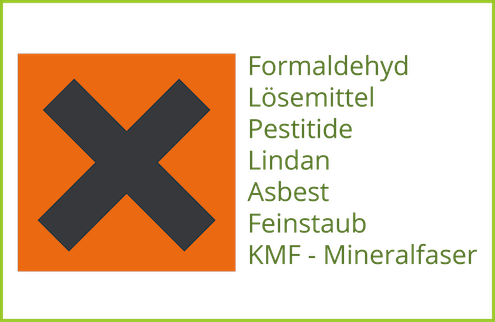Indoor pollutants
We spend most of our lives indoors. Due to the airtight construction of new buildings or building renovation, the risk of mould growth and pollutant contamination increases. There are no fixed limit values for living spaces, so that orientation values of the Association for Indoor Pollutants (AGÖF e.V.) or the building biology guideline values for sleeping areas from the Standard of Building Biology Measurement Technology SBM-2015 are applied.
Occurring pollutants in buildings:
VVOC
(Very volatile organic compounds such as methanol, ethanol, formaldehyde, acetone, etc.)
Occurrence: e.g. cleaning agents, adhesives, etc.
VOC
(Volatile organic compounds such as glycols, alcohols, isocyanates, ethers, etc.)
Occurrence: e.g. paints, varnishes, adhesives, plastics, cleaning agents, etc.
SVOC
(Semi volatile organic compounds such as biocides, lindane, pentachlorophenol, etc.)
Occurrence: e.g. wood preservatives, pest control, disinfectants, EPS/XPS insulation materials, etc.
MVOC
(Microbial organic compounds – outgassing of fungi and bacteria (chlorine anisoles))
Particles & fibres
(Asbestos, artificial mineral fibres (KMF), dust, fine dust)
Occurrence: e.g. façade panels, eternit roof, asbestos window sills, asbestos filler, KMF insulation materials for impact sound insulation, pipe insulation, roof or façade insulation, etc.
Depending on the pollutant, the investigation can be carried out by means of room air measurements, house dust analysis or material samples and depends on whether there is a concrete suspicion or possible sources are still unknown.



